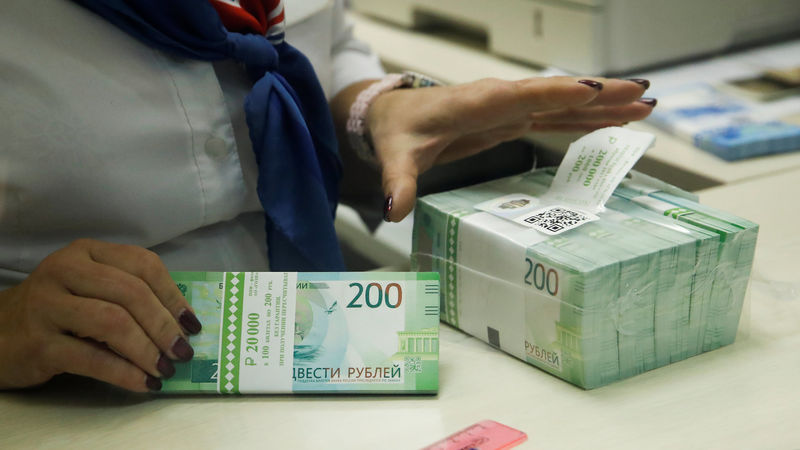MOSCOW (Reuters) - The Russian rouble pared losses on Monday helped by a weaker U.S. dollar and higher oil prices, distancing from the pressure of new U.S. sanctions against Moscow.
The dollar was weakening amid news that Mexico and the United States were close to agreement on bilateral issues in the renegotiation of the North American Free Trade Agreement that can soften a global trade war risk.
The rouble was trading flat at around at 67.13 versus the dollar as of 1450 GMT
The rouble was trading 0.5 percent weaker in the early trade on Monday at 67.42 versus the dollar.
"This rollback of the dollar/rouble is a reaction to forex, where the dollar is again in negative," a dealer with a big Russian bank said.
Evgeny Koshelev, an analyst at Rosbank, said the market also did not react to the U.S. sanctions against Russia, tied to a nerve agent attack in Britain, that were expected since the beginning of the month and came into effect on Monday.
A second batch of penalties will be imposed after 90 days unless Russia gives a "reliable assurance" that it will not use chemical weapons and will allow on-site inspections by the United Nations or another international observer group.
WATCHING
The market is also watching the situation with a draft bill by U.S. senators that includes restrictions on investment in new Russian sovereign debt and bans several state-run Russian banks from operating in the United States.
The Finance Minister Anton Siluanov said on Monday Russia has a range of measures it can take in case the United States imposes sanctions on the Russian state debt.
"Until the beginning of September we will not see anything new about the sanction bill," the analyst Koshelev said.
He expected the rouble to even strengthen further this week.
The rouble was also supported by the fact that the central bank has eased pressure on the currency by suspending its daily buying of dollars until the end of September.
The rouble was down 0.42 percent versus the euro to 78.28
The price of oil, Russia's key export, remained supportive for Russian assets, hovering far above levels factored into the budget. Brent crude oil (LCOc1) was up 0.21 percent at $75.99 a barrel.
The dollar-denominated RTS index (IRTS) was up 1.75 percent to 1,083.2 points, while the rouble-based MOEX Russian index (IMOEX) was 1.18 percent higher at 2,306.6 points.
